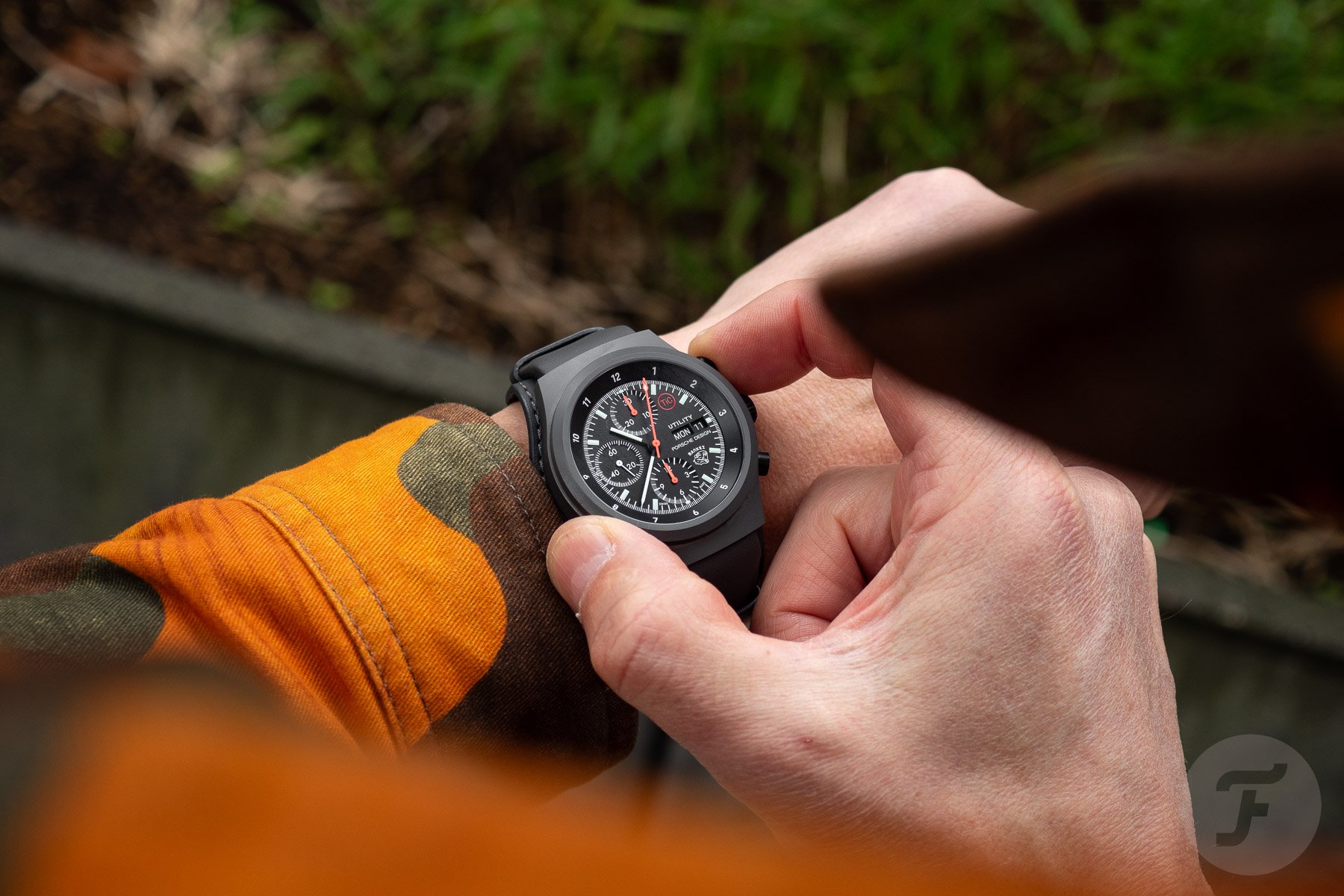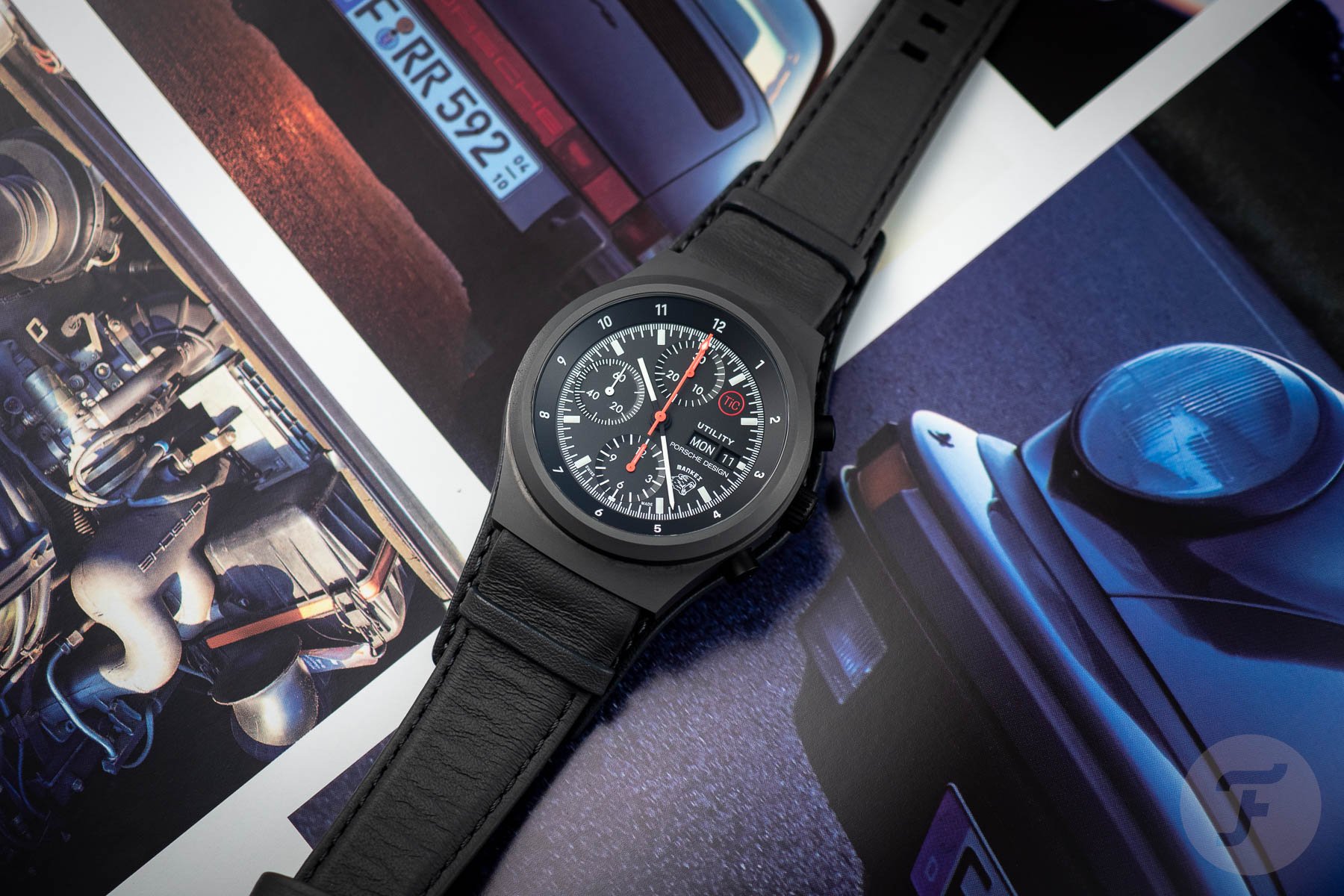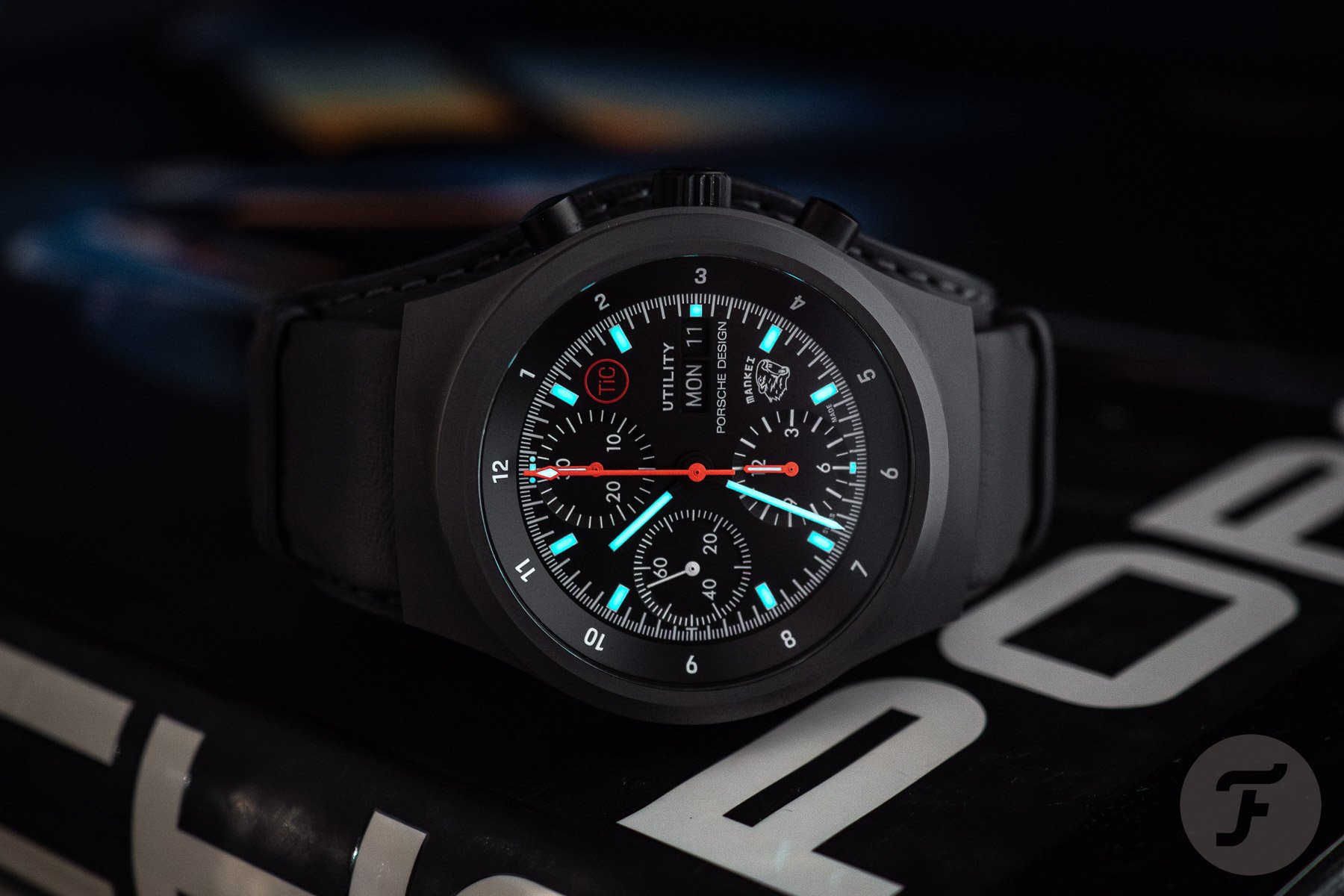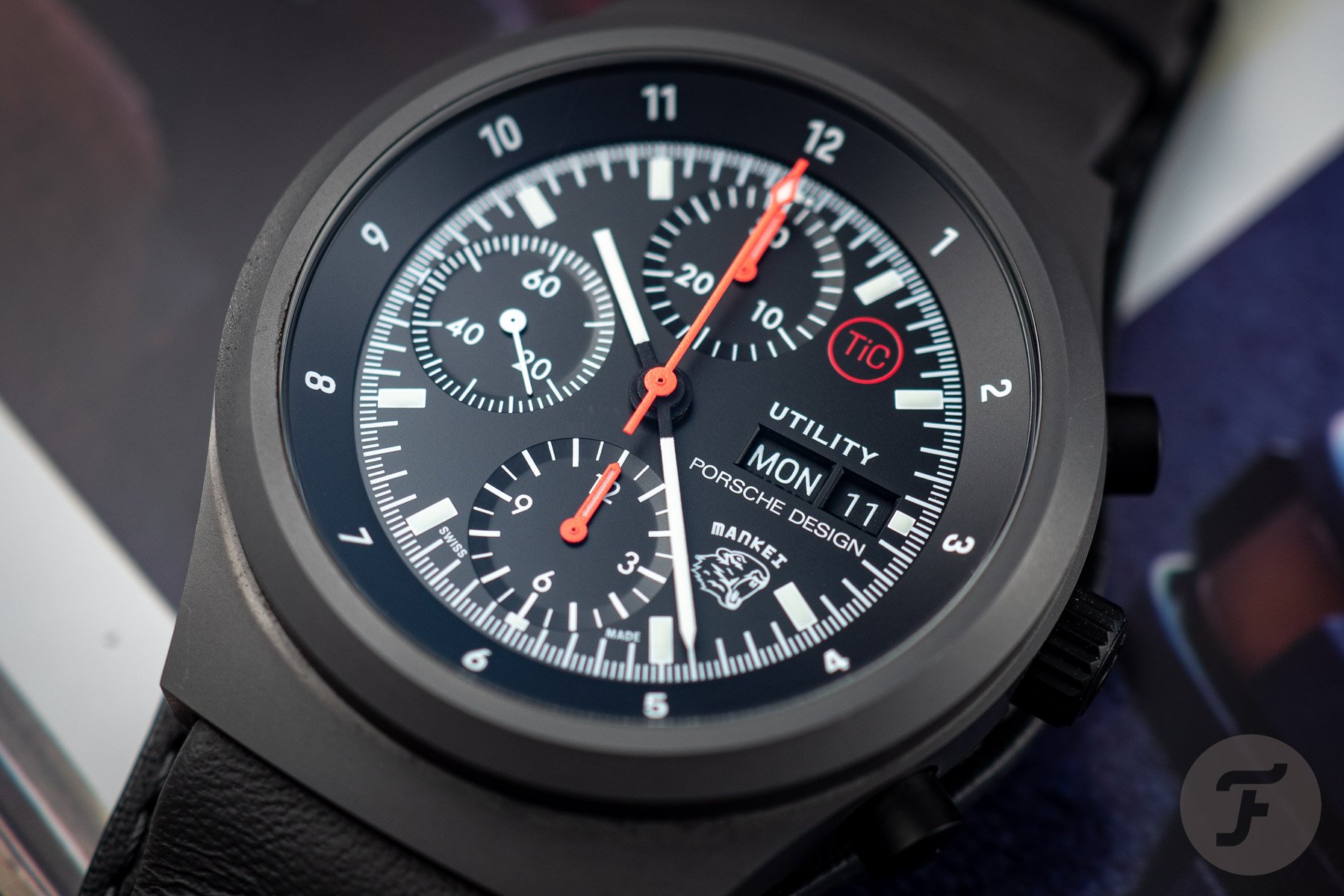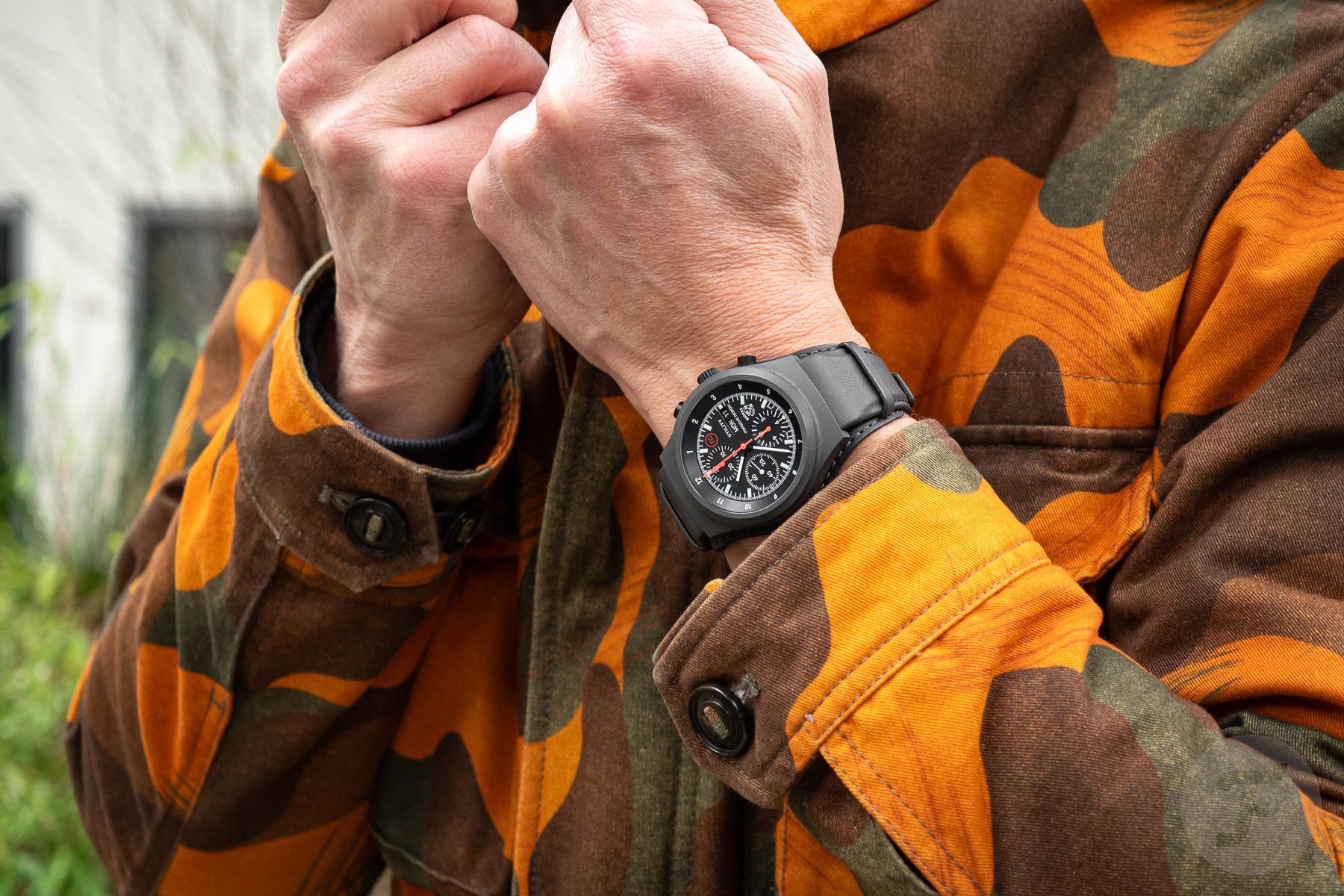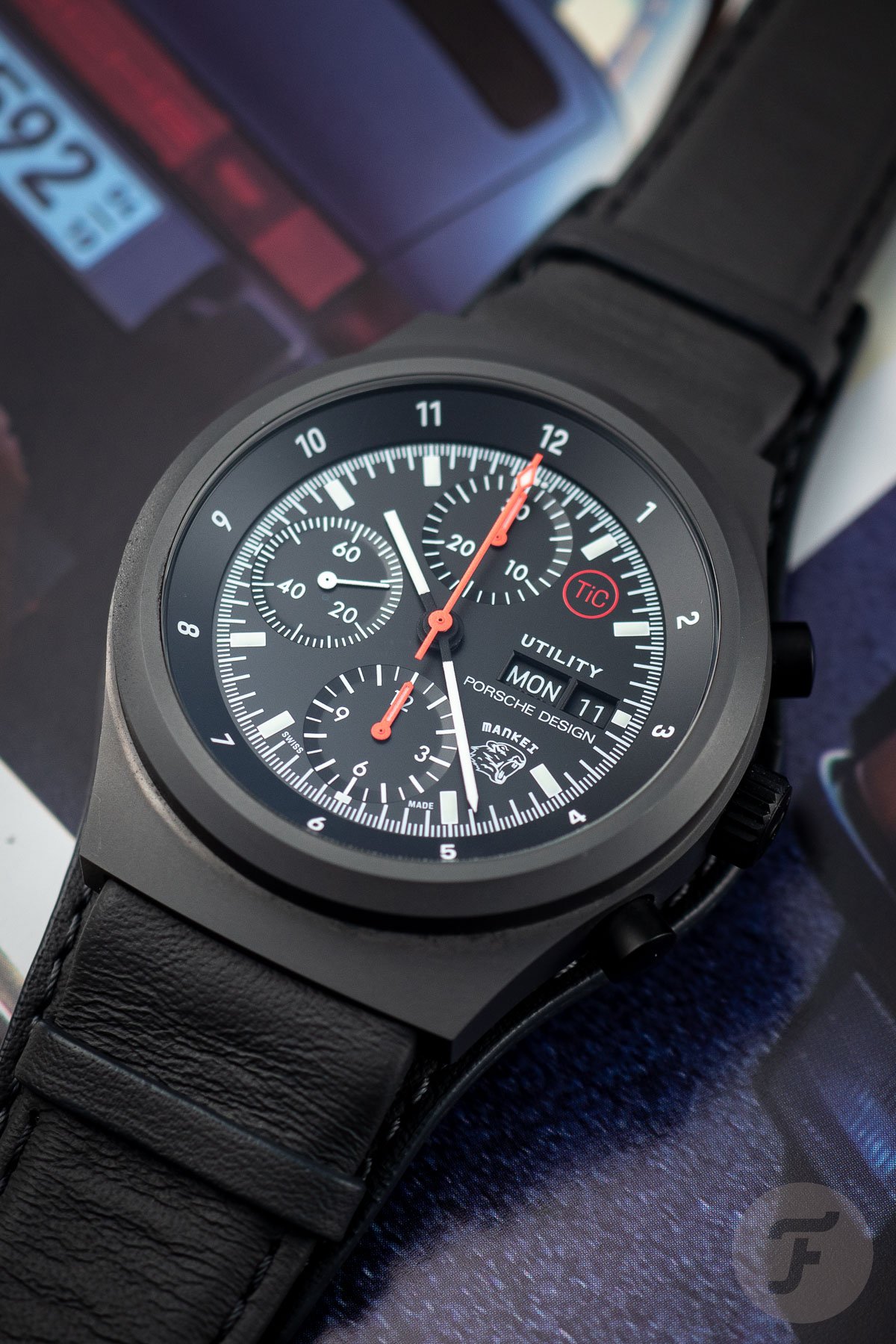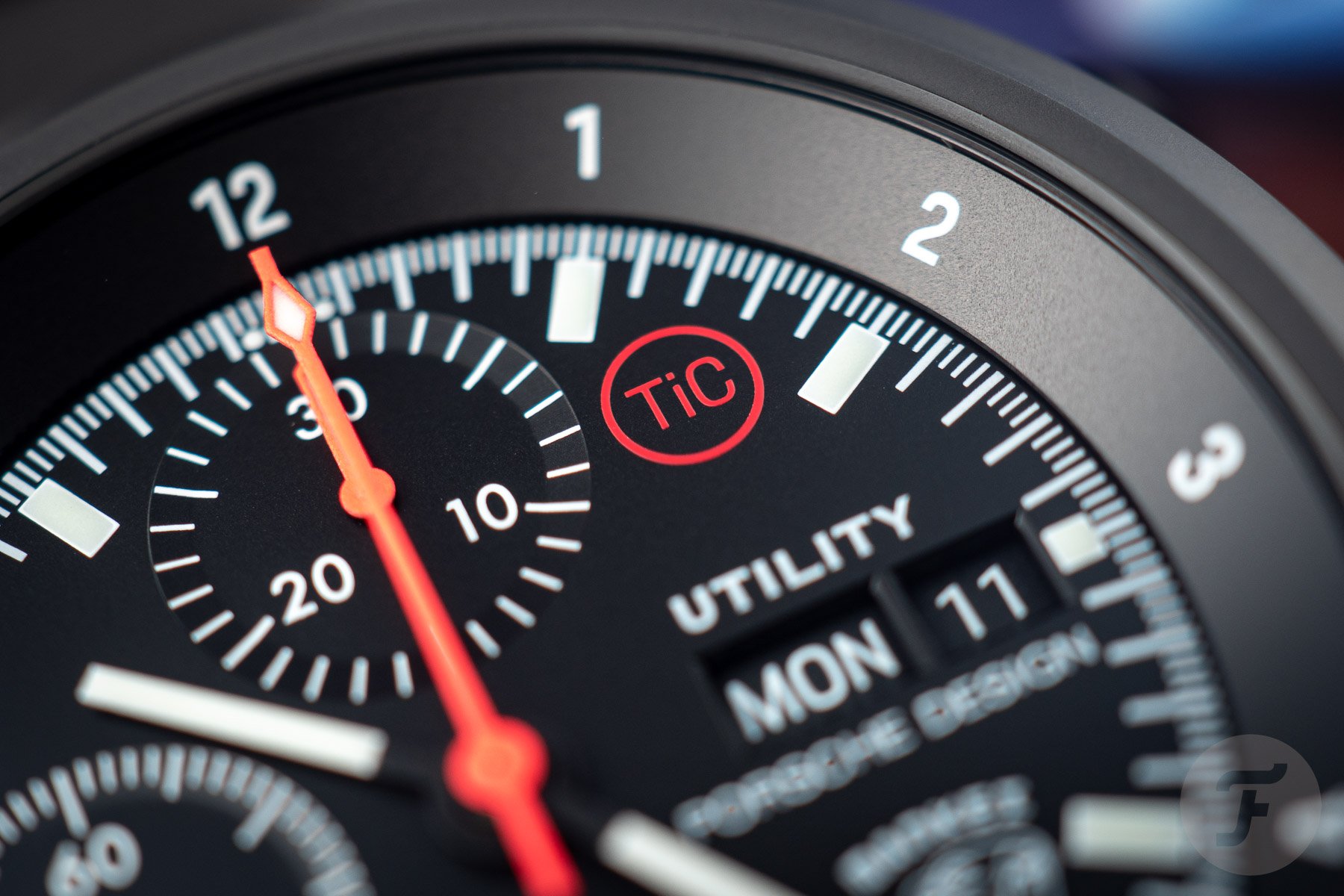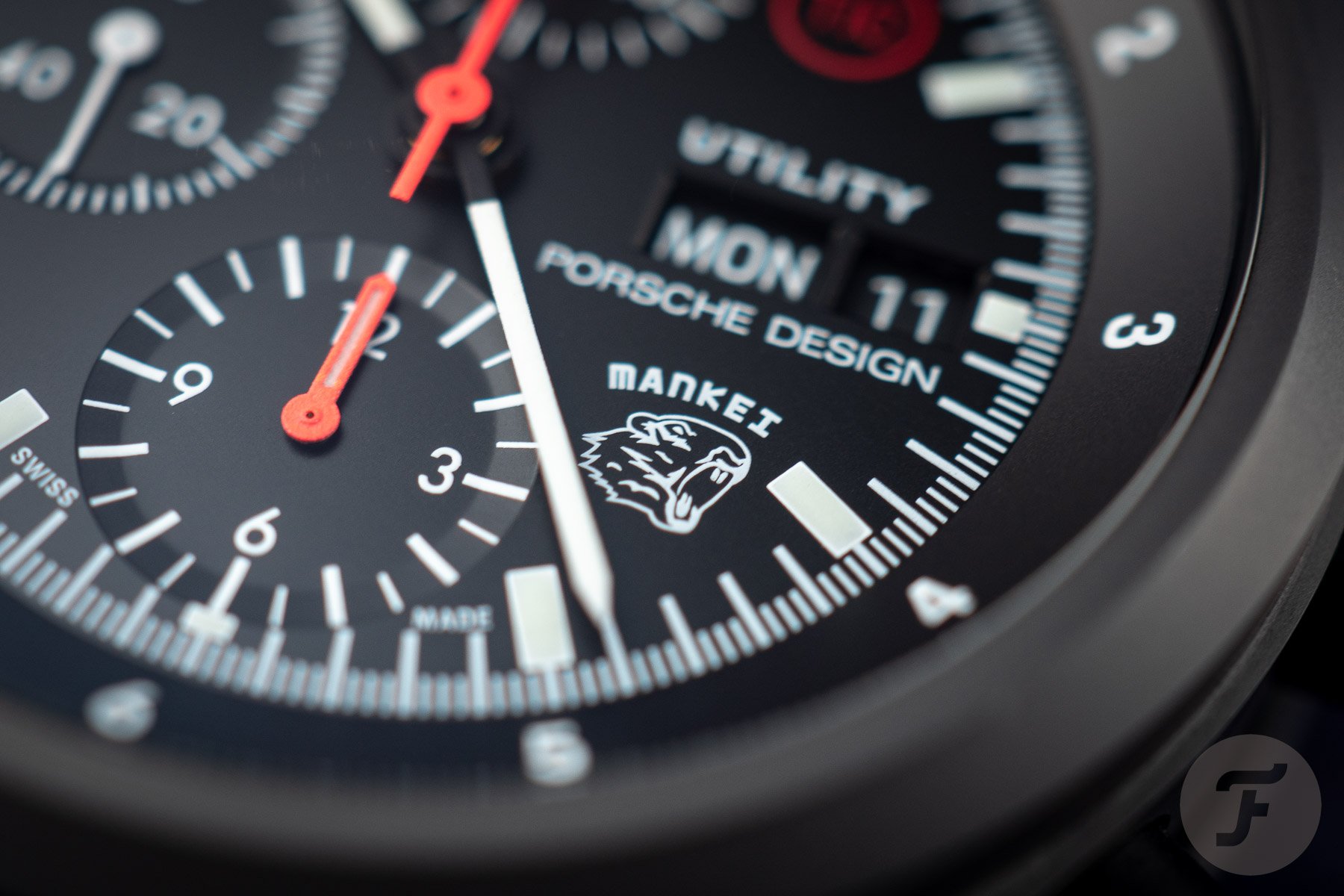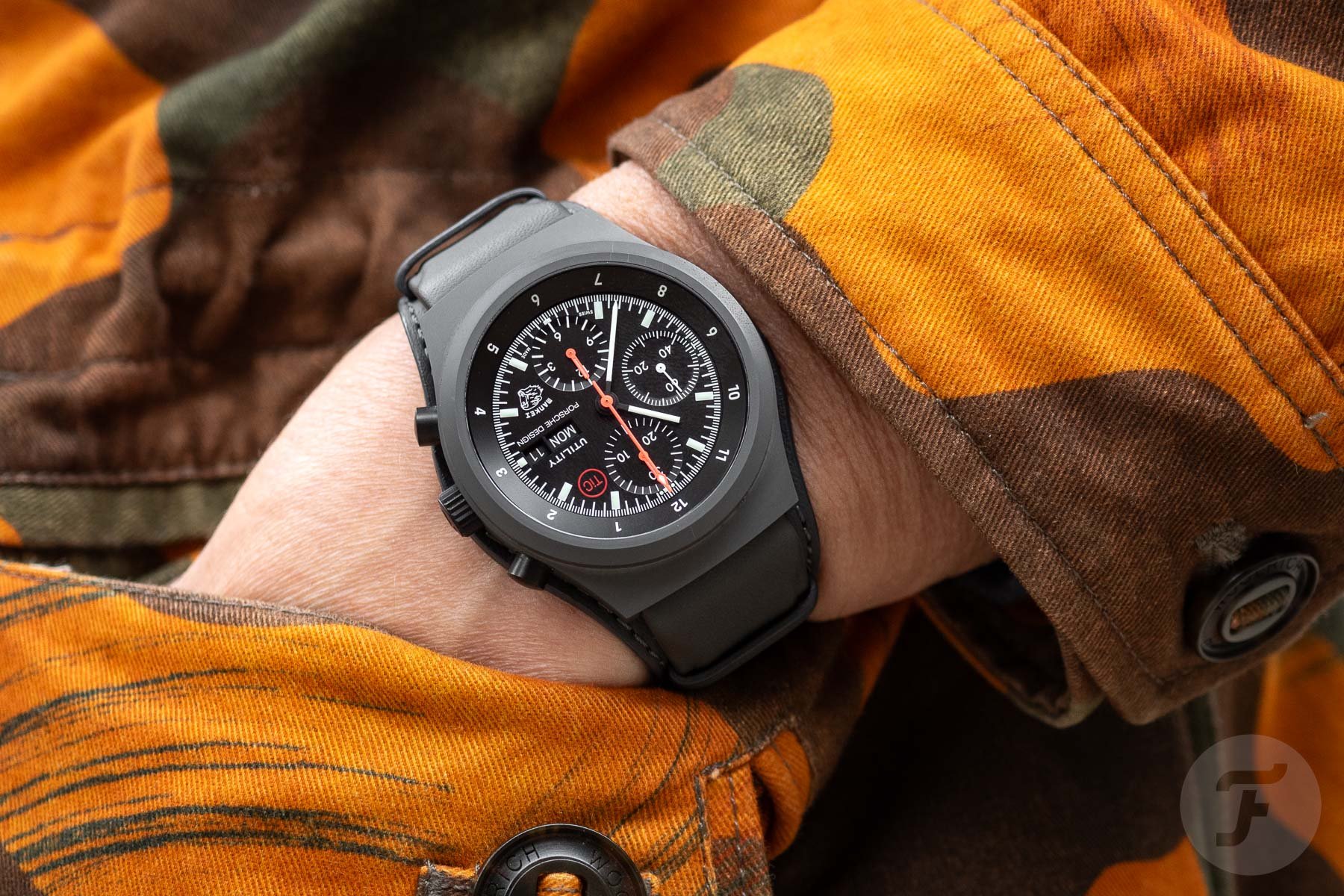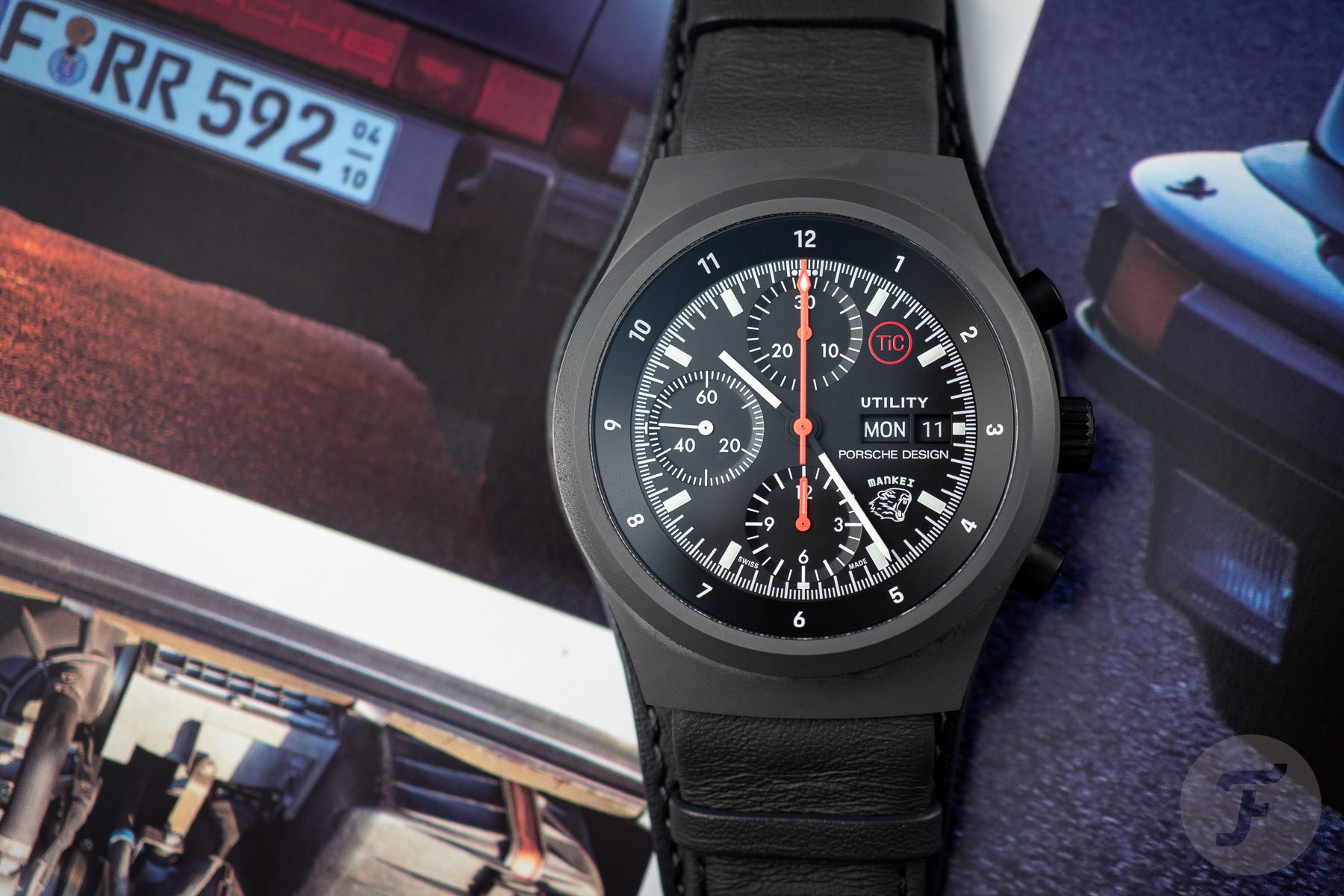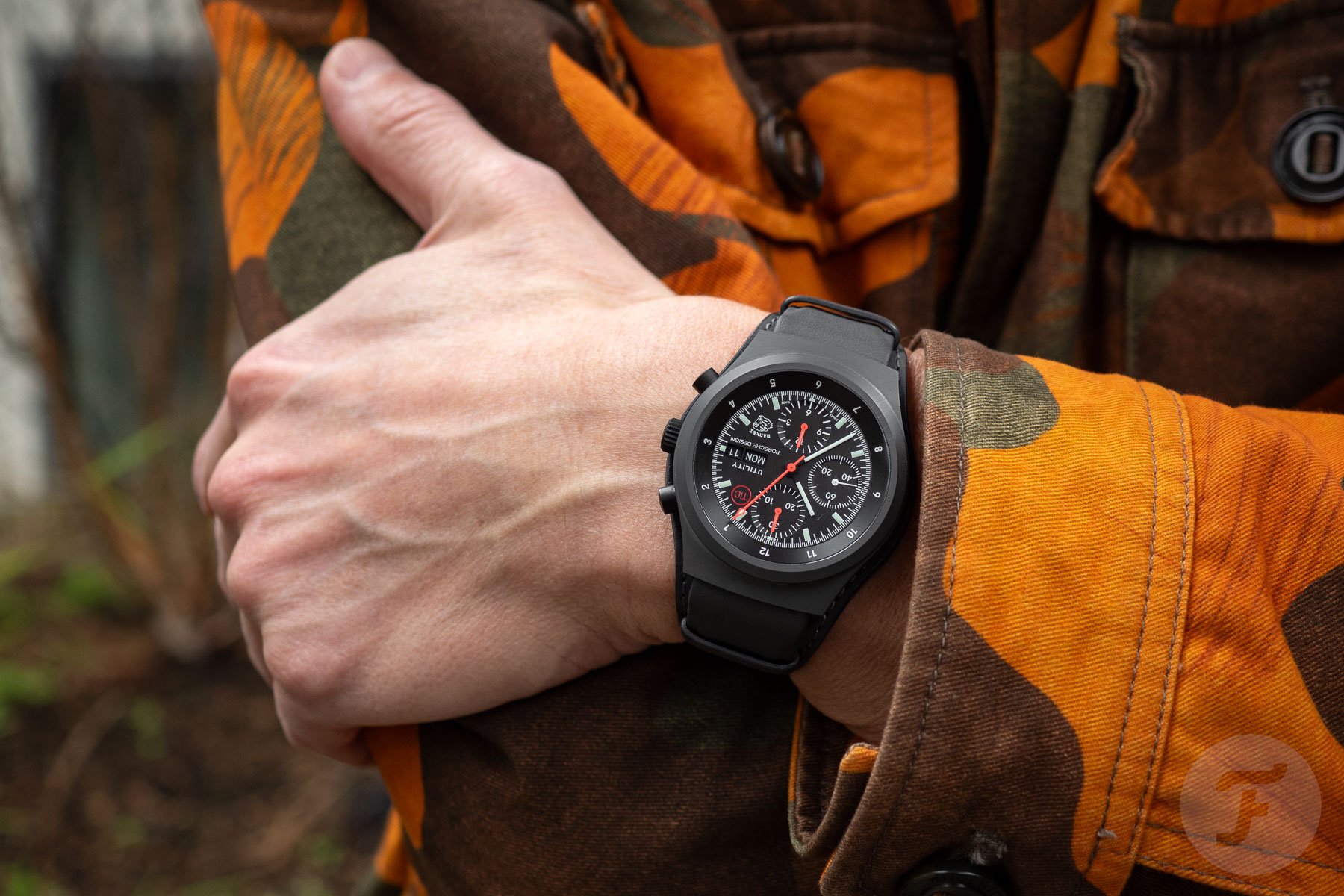Taking The Porsche Design Chronograph 1 Utility LE For A Ride
Tiger bites kill, but marmot bites are just a tad annoying. Porsche Design decided to reimagine a military chronograph of the 1970s and position it in a more peaceful, civilian way. So the original U.S. Air Force tiger’s head made way for a screaming marmot. The medium-sized rodent is called a “Mankei” in Pinzgau, Austria. Mankei is also the name of Ferdi Porsche’s meeting place for car enthusiasts, located on the Grossglockner High Alpine Road close to Studio F. A. Porsche. Getting back to the new watch (something that’s always a bit difficult when talking about Porsche Design), it is made of titanium carbide and has left behind the Military moniker for the friendlier name Utility. I took the Porsche Design Chronograph 1 Utility LE for a spin.
It started back in the 1970s with a 38mm Military Chronograph in steel with a matte black PVD coating, and it culminated in the Chronograph 1 Utility LE in a titanium carbide 42.7 × 15.5mm case with a 48mm lug-to-lug length. These are not enormous dimensions, but because the watch comes on a Bund strap, it has an undeniable presence. Also, because the strap closes with a double-folding buckle, the Porsche Design Chronograph 1 Utility LE sits high on the top and bottom of the wrist.
Porsche Design Chronograph 1 Utility LE: Bonding with a Bund strap
The fact that the Porsche Design Chronograph 1 Utility LE sits high because of the Bund strap is not an observation that should lead to a negative remark. Bund straps, named after the Bundesrepublik Deutschland, the country that issued them to its military aviators, are straps with an additional layer under the case to buffer the wrist. This layer protects the skin from a temperature-sensitive metal watch case that could either cause burning or freezing. A Bund strap also keeps sweat away from the watch case and, in a worst-case scenario, the movement inside, meaning possible corrosion is kept at bay.
On the very first version in the 1970s, the case’s matte black coating had a function; it was antireflective, which was important when flying an F-104 Starfighter or an F-4 Phantom in service with either the West German Bundeswehr or the U.S. Air Force. The original watches also had a red circular “3H” symbol on the dial as a sign that the hydrogen isotope tritium was used as a luminous material. That radioactive material is no longer in use, with Super-LumiNova having taken its place. In the case of the Chronograph 1 Utility LE, it’s blue-glowing Super-LumiNova. Just as the tiger was replaced by a marmot, the “3H” symbol also made way for something different. In the spirit of the old symbol, the “TiC” logo appears. “TiC” stands for titanium carbide, the material used to craft the case.
Inspecting the case of the Chronograph 1 Utility LE
The titanium carbide case is a very interesting one, especially when looking at it up close. At first, it looks like a matte, very dark gray ceramic case. But when you look closer at the material, which ensures lightness and scratch-resistant properties way higher than the original steel watch and its quick-wearing coating, you will discover a texture that almost looks like concrete. The titanium carbide looks to be porous, not quite smooth, and even a bit rough and poorly finished in places.
The Bund strap is the dominant factor
With its straight lines and hooded lugs, the matte case oozes no-frills functionality. And so does the dial. The vibrant orange hands linked to the chronograph function do stand out, but that’s only because it makes them easier to read, not for ornamental reasons. The Bund strap, while originally being functional, is a different story. It’s the double-folding clasp, made from titanium and steel with a black titanium carbide coating and glass-bead-blasted finish, that over-complicates the instrumental strap in an effort to make it more luxurious.
The fact is that the Chronograph 1 Utility LE has a luxury price of €11,950 / US$13,000, and Porsche Design (along with lots of other brands, for that matter) thinks that a watch at this price level deserves a folding clasp because consumers perceive it as a luxury feature.
But a Bund strap is not a luxury component; it’s a functional, utilitarian one. Apart from the historical mismatch, the fact that the Chronograph 1 Utility LE is now bulky on the top and the bottom causes aesthetic and functional problems.
On the top of the wrist, the case with one layer of slate-gray Bund strap (made of the same leather Porsche uses for its car seats) is 16mm thick. On the underside of the wrist, the folding clasp is 10.5mm thick. A simple pin buckle would not only be thinner, simpler, and easier to put on, but it would also wear more comfortably, although comfort is not completely objective. A pin buckle would also be more in line with the military origins and with the new name “Utility” on the dial. Nothing is more utilitarian than a pin buckle if you ask me.
The power inside
The dial layout gives you the impression that there’s a Valjoux 7750 inside the 100m-water-resistant case. But there isn’t. The automatic movement inside the watch is a COSC-certified 4Hz Porsche Design Werk 01.240 caliber with 48 hours of power reserve. This chronograph with a flyback function is based on the classic and proven Valjoux architecture, and it was developed together with Concepto from the Swiss watchmaking town of La Chaux-de-Fonds.
The layout is classic and comforting, with a day/date indicator at 3 o’clock. This is the dial design I grew up with, horologically speaking, and it fits the origins of the watch perfectly. Although the dial is quite busy with its logos above and below the day and date indicators, it’s also such a familiar sight, and the readability is great. Regarding the “pusher feel,” there’s also nothing new or shocking to report. Operating the pushers results in an instant response with a nice mechanical “click” that feels solid, inspiring confidence.
Another marmot and another strap
As mentioned, this watch utilizes a titanium carbide case. This alloy is also used in the production of slicing instruments, abrasive steel bearings, and wear-resistant tools. The solid screw-in case back, however, is “non-carbide” titanium with a matte black coating. On it, there’s an engraving of the screaming marmot that also appears on the dial as well as the wording “1 Utility Edition” and the watch’s unique number “XXX/250.” Notably, the watch also comes with an extra white textile strap. Unfortunately, that strap wasn’t available for me to try. The “interchangeable wrist strap system,” as Porsche Design puts it, would have made it easy to replace the Bund strap with its folding clasp. Unfortunately, the longer I wore the Chronograph 1 Utility LE, the more that clasp annoyed me.
And there you have it. When I first saw the Chronograph 1 Utility LE after it arrived at the office, I thought, “Wow!” It was a primal reaction indeed, but, in my humble opinion, this Porsche Design is a very cool-looking watch. The colorway and the Bund strap look awesome in the eyes of someone who immediately thinks of jet fighters from the 1970s and ’80s. Unfortunately, I found that wearing it was not 100% satisfactory because the strap setup didn’t interact well with my wrist.
Unfinished business
There’s also the somewhat rough look of the slate gray titanium carbide case. Morgan’s photos reveal a porous surface that also seemed to need some extra love and care — finishing, that is. Having said that, the watch on my wrist was the number 000 and maybe not up to production standards. The number 000 also didn’t have the blue Samstag/Saturday indicator that the watch on the Porsche Design website does. Instead, it just showed “Saturday” in white writing.
The slightly rough-looking case doesn’t match the €11,950 / US$13,000 price. Furthermore, the uncomfortable (for me) Bund strap with its thick double-folding clasp overshoots its mark. Yes, many people think that a folding clasp is a sign of luxury. But it also clashes with the utilitarian origins of the already prominent strap with its extra layer. That said, if you’re willing to shell out serious money for a modern pilot-style chronograph with an interesting history, this might be the watch for you. It will most definitely stand out among the pilot’s watches from other manufacturers.
For more information on the Porsche Design Chronograph 1 Utility LE, please visit the brand’s official website. And if you want to find out more about the watch’s titanium carbide case, please read Thomas’s story on how it’s made.

